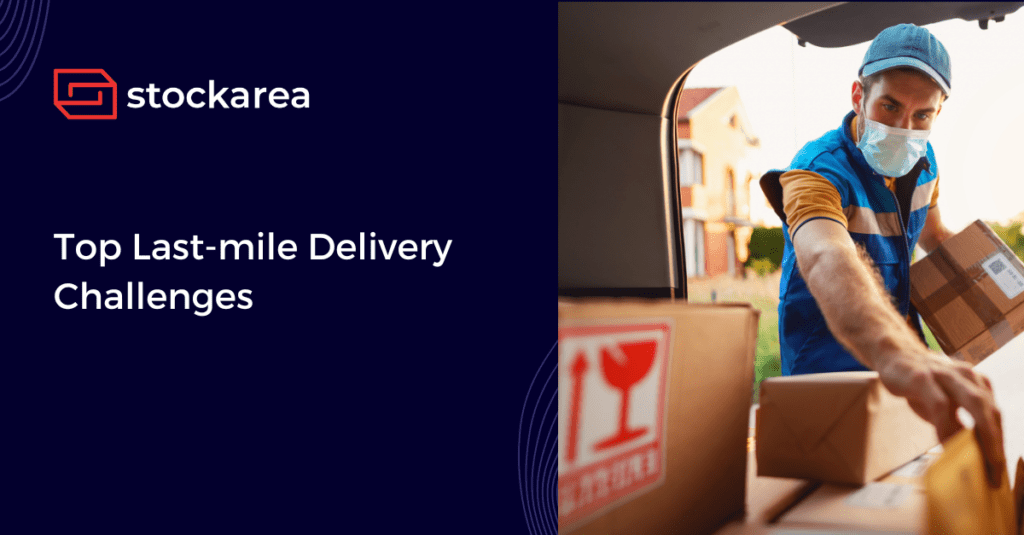Last-mile delivery is one of the most critical parts of the supply chain as it acts as an interface between the consumers and the supply chain management. However, the importance and goal of achieving consumer satisfaction have raised numerous challenges in the last-mile delivery industry. The major challenge is that last-mile delivery accounts for about 53% of the total supply chain cost, making it the most expensive part of the supply chain.
Apart from being expensive, the last-mile delivery industry is facing challenges in keeping up to speed with shifting consumer behaviour, transportation, delivery inefficiencies, and environmental disruptions, making the smooth operation of the industry a difficult task.
1. Higher Delivery Costs
The delivery cost is high because many expenses add up in the last-mile industry, like fuel, inventory, labour, and maintenance. Additionally, failed deliveries, returns and replacements are some of the major contributing factors to the increasing cost of the last-mile industry.
With consumers wanting features like free delivery and same-day delivery while expecting their packages to reach them without damage, budget management in the last-mile industry has become a significant challenge.
2. Rising Consumer Expectations
The ultimate goal of the last-mile delivery is consumer satisfaction. However, keeping up with consumer expectations is one of the critical challenges that the industry is facing today. Consumers today want shorter delivery frames with minimal shipping charges and fast-responding customer support. Achieving these services while maintaining profit margins is a major challenge which is putting immense pressure on the last-mile industry.
Poor consumer experience is the primary reason for returns and order cancellations which, means increase reverse logistics costs.
3. Lack of Real-time Visibility
Consumers want to know every detail about their packages. Therefore, end-to-end visibility is essential for last-mile delivery to maintain customer satisfaction. Enabling visibility to consumers has been made possible through real-time tracking, which gives transparency on the movement of packages. But many companies are still not prioritising end-to-end transparency with their consumers.
Many last-mile delivery companies still use technologies like scanning codes and tracking numbers, which only give information like whether their package is in transit and if it is out for delivery. There is no estimated time of arrival or other updates that the consumers want to know, which makes for a poor customer experience.
4. Poor Route Planning
Route planning is challenging because of the uncertain contingencies that can occur during last-mile delivery. Factors like weather, political or social events that lead to road blockages, road repairs, and unexpected congestion can hamper the route optimisation process. Even with technology that can forecast weather and congestion at a given hour of the day, it is impossible to predict and plan delivery routes accurately.
Poor route planning leads to delayed deliveries, increased idle time, fuel inefficiency, and decreased driver productivity, which can be catastrophic to the last-mile delivery industry.
5. Obsolete Technology
About half of the global last-mile delivery companies use outdated technology to carry out their process. Not using the right modern technology can cause problems with delivery management, delays, and operations. Manual methods are not feasible in today’s day and age, especially with the availability of equivalent modern-day technology to replace them. Using obsolete technology is highly costly and hampers the growth of the last-mile industry, resulting in high customer turnover.
6. Failed Deliveries
Delays and failed deliveries are inevitable in the last-mile delivery industry. Tackling delivery delays has been difficult for last-mile services for many years, and with the demand for faster deliveries increasing, it is only becoming more challenging.
These are some reasons why meeting shorter delivery periods is a challenge:
- Most warehouses are located on the outskirts of a city, which can make commuting a lot longer, thereby extending the delivery period.
- Unpredictable order volumes can affect the delivery span.
- Problems during commutes include unforeseen congestion, road blockages, or sudden weather changes.
Factors like wrong address verification, unforeseen delivery incidents, unpredictable weather, and traffic conditions are all reasons why delays can happen and deliveries fail. Failed deliveries and delays can increase operational costs and be gruelling for the industry in terms of making profits.
7. Unpredictable Accidents
A controlled environment can be maintained within a facility. However, anything can go wrong during transit. The safety of the goods during the transportation is a priority because damaged goods are an additional cost for the company. But companies can’t predict conditions like traffic, accidents, and bad weather, which makes it hard for courier and delivery services to run smoothly.
Accidents can also occur if you don’t practice proper load distribution and don’t use the vehicle to its total capacity. Due to improper packaging of the goods, there is a risk of the products getting damaged due to erratic roadways.
Related posts
- 8 Proven Ways to Reduce Last-Mile Delivery Cost
- 6 Proven Tips To Reduce Shipping Costs
- What Is A Shipping Label?
- Complete Guide On Amazon Seller Central
- How Can Technology Improve Last-Mile Delivery?
- How To Start Ecommerce Business In India
- What Is An Online Marketplace?
- What Is Dropshipping?
- 6 Simple Steps To Start Dropshipping Business
- What Is E-Commerce Fulfillment?
- How to Choose the Right E-commerce Fulfilment Partner for Your Business
- Dropshipping Vs E-Commerce Fulfillment: Which Is Best For Online Seller?
- Amazon FBA : Complete Beginners Guide
